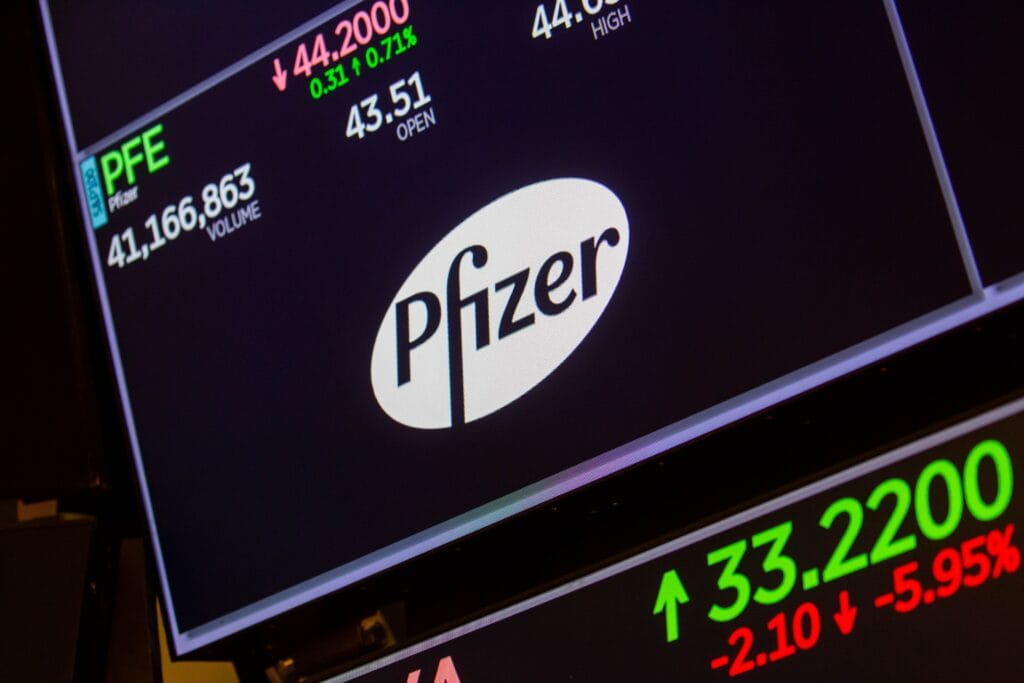A rash of dealmaking helped reverse the declining fortunes of biotech stocks over the last five months. And as AstraZeneca Plc (Nasdaq: AZN)’s $1 billion deal to acquire closely-held Amolyt Pharma illustrates, the likelihood is there’s much more to come.

A total of 46 listed biotech transactions worth more than $100 billion were announced across the industry last year, the highest since spending peaked in 2019, according to data compiled by Bloomberg. Chief among them was Pfizer Inc. (NYSE: PFSE)’s $42 billion acquisition of cancer drug maker Seagen Inc.
The increase in deal activity bodes well for a rally that has seen the Russell 2000 Index Biotechnology Subsector rise nearly 60 percent since its October low, also boosted by a shift back toward long-duration growth stocks on the prospect of lower interest rates. Many of the world’s top pharmaceutical firms are seeking deals to transform often aging drug pipelines, and have billions of dollars to spend on doing so.
“The prospect of further M&A activity looks strong this year,” said Ailsa Craig, co-lead manager of the International Biotechnology Trust. “Patent expiries among the larger pharma players continue to be a pressing issue and they will continue to look towards the biotech sector for opportunities to plug the holes in their product shelves and pipelines.”
Big names set to lose patent protection for some of their key drugs include Merck & Co. (NYSE: MRK) and its top-selling cancer medicine Keytruda, as well as AstraZeneca, Pfizer and Bristol-Myers Squibb Co. (NYSE: BMY)
“$200 billion of sales will need to be replaced over the next decade in pharma companies,” said Alex Hunter, global equity analyst at Sarasin & Partners. “The necessity to develop new drugs, both internally and through M&A, will still be a priority.”
The world’s top 20 pharmaceutical firms by revenue have plenty of firepower, holding cash and cash equivalents of more than $110 billion between them at the end of last year, according to Bloomberg calculations. This equates to more than one-third of the market value of the U.S. small and midcap biotech sector.
Immunology, obesity and cancer have been hot areas for M&A in the sector, Dan Lyons, a portfolio manager and research analyst at Janus Henderson Investors, said, adding that fatty liver disease could be next.
Some of these stocks have already seen big gains. Denmark’s Zealand Pharma A/S, which is working with partner Boehringer Ingelheim GmbH on a medicine to treat a severe form of the condition, has risen about 90 percent this year, while Viking Therapeutics Inc. (Nasdaq: VKTX) has nearly quadrupled. Madrigal Pharmaceuticals Inc. (Nasdaq: MDGL), Akero Therapeutics Inc. (Nasdaq: AKRO) and 89Bio Inc. (Nasdaq: ETNB) have all notched double-digit gains.
Firms developing experimental treatments have attracted the most M&A attention. Switzerland’s Novartis AG is paying €2.7 billion (about $3 billion) for MorphoSys AG and its blood cancer treatment. Sanofi’s planned purchase of U.S. biotech Inhibrx Inc. would give the French firm a potential therapy for a genetic disorder that affects the lungs and liver. In the U.S., Johnson & Johnson (NYSE: JNJ) completed its acquisition of Ambrx Biopharma Inc., a developer of cancer-focused drugs, this month.
“We’ve continued to see true innovation-driven companies that we’re invested in deliver strong stock performance as their medical practice-changing therapies advance,” Lyons said. “Importantly, this innovation has continued.”



